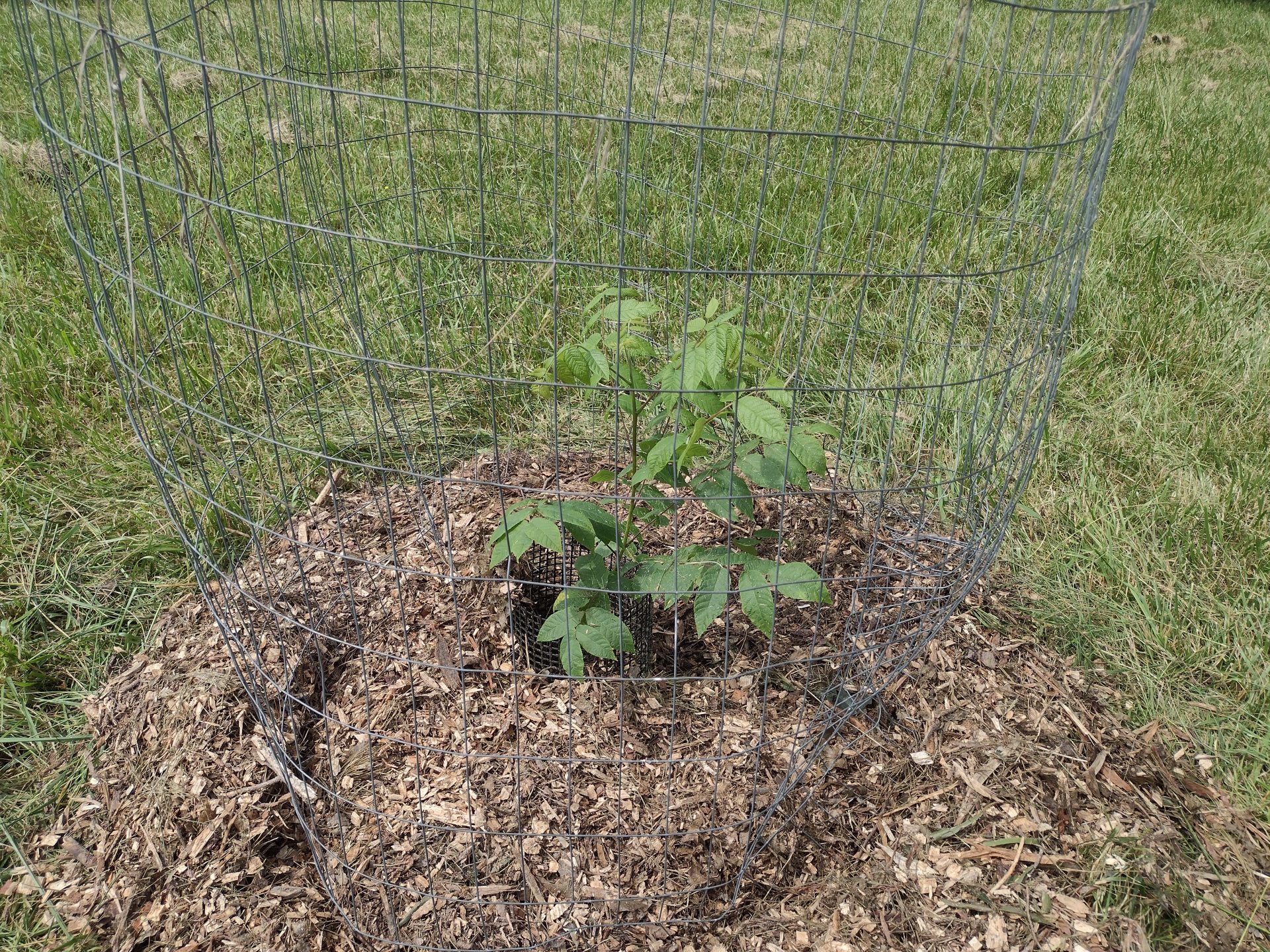
“The plan” is to install the next phase of orchard just after Thanksgiving. We’ll offer a class in planting fruit trees for anyone that wants to learn and join in as we plant the next phase of our orchard. I’ll post the class invite on the website once it is scheduled. It would be great if you could join us for a day of planting trees and wonderful fellowship.
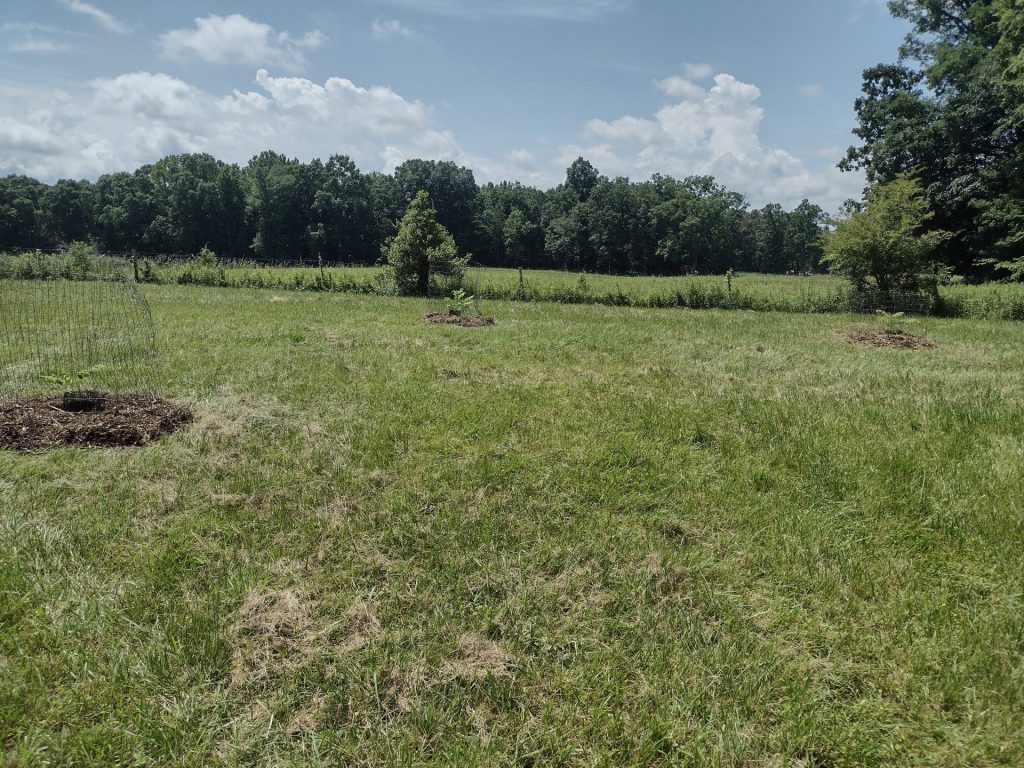
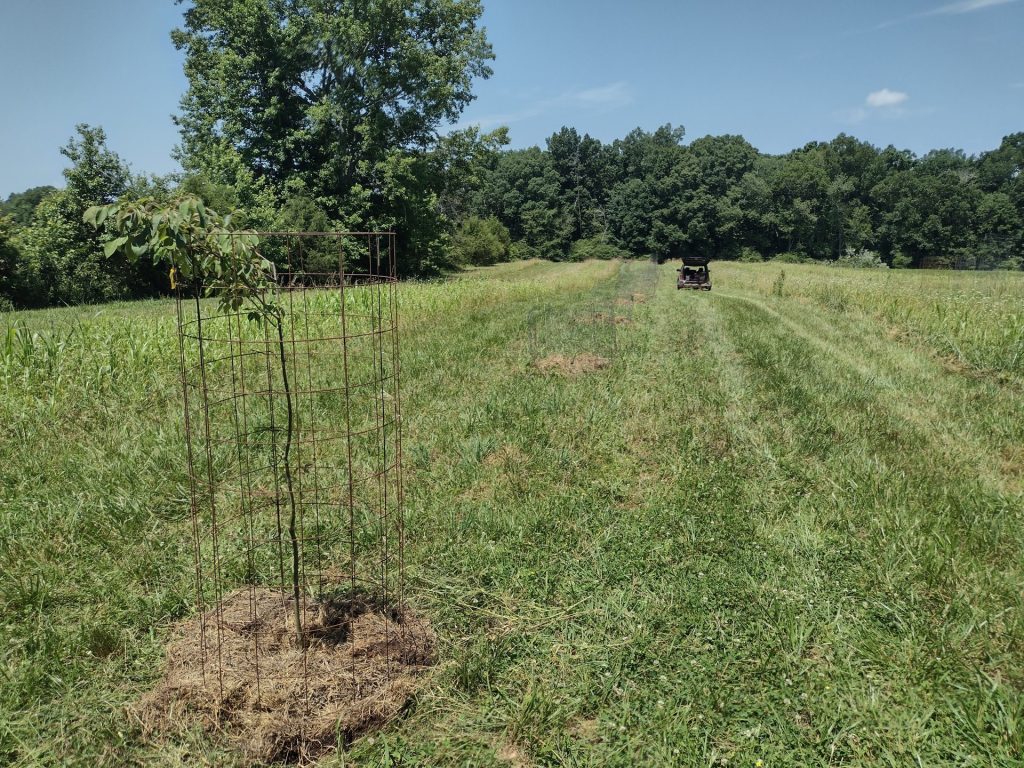
Back Field Plans
This fall we plan to add the next wave of fruit trees to the back field. These include
- Peaches – Contender, Redhaven, and Belle of Georgia varieties
- Asian Pear – Korean Giant and Chojuro varieities
- Plum – Byron Gold, Methley, Ozark Premier and Blue Damson varieties
- Plumcot – Spring Satin variety
- Nectarines – Carla Rose variety
- Black Walnut – native
- Asian Chestnut – Dunstan variety
- Mulberry – Dwarf Everbearing
We also have a pecan tree that didn’t survive. So we’ll replace that pecan tree. The variety is Occonee. Pecans have very specific pollination periods so it is important to choose the correct varieties so they can cross pollinate and produce pecans.
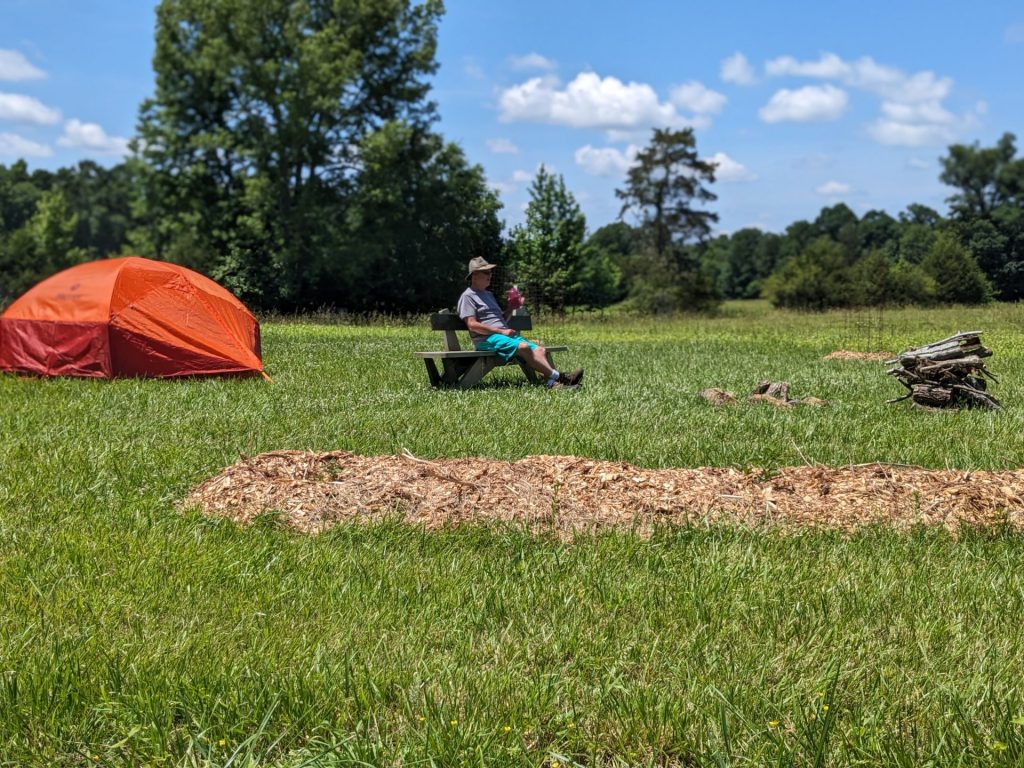
Campsite Plans
We want to keep plenty of room for tents in the back field campsite as we add more fruiting plants to the mini-food forest there. We hopee to add blueberries this fall. The selected rabbit eye blueberry varieties are Premier, Columbus, and Tifblue.
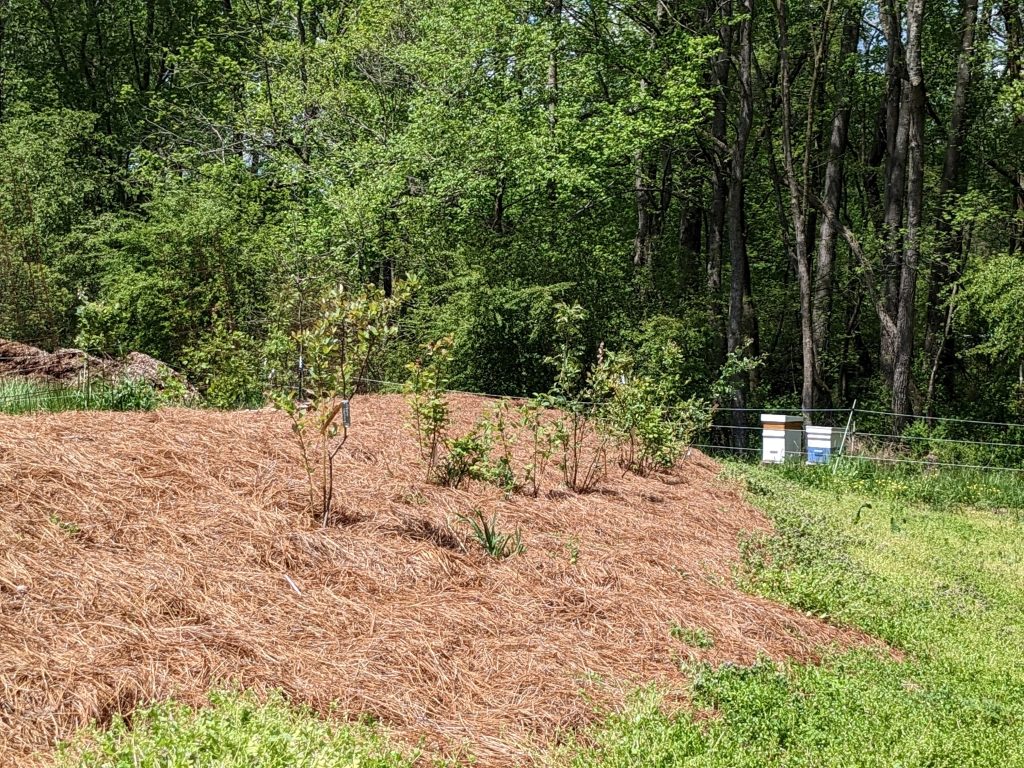
Food Forest Plans
One of the plants that has struggled in the food forest is the blackberries. We plan to take out part of the blackberries and their trellis. Then we can come black and plant fruit trees. We’ve already replaced part of the blackberries with black chokeberrie (you may recognize them as aronia berries). I’m hoping to add additional chokeberries to the food food forest along with plum trees (Methley and Ozark Premier varieties).
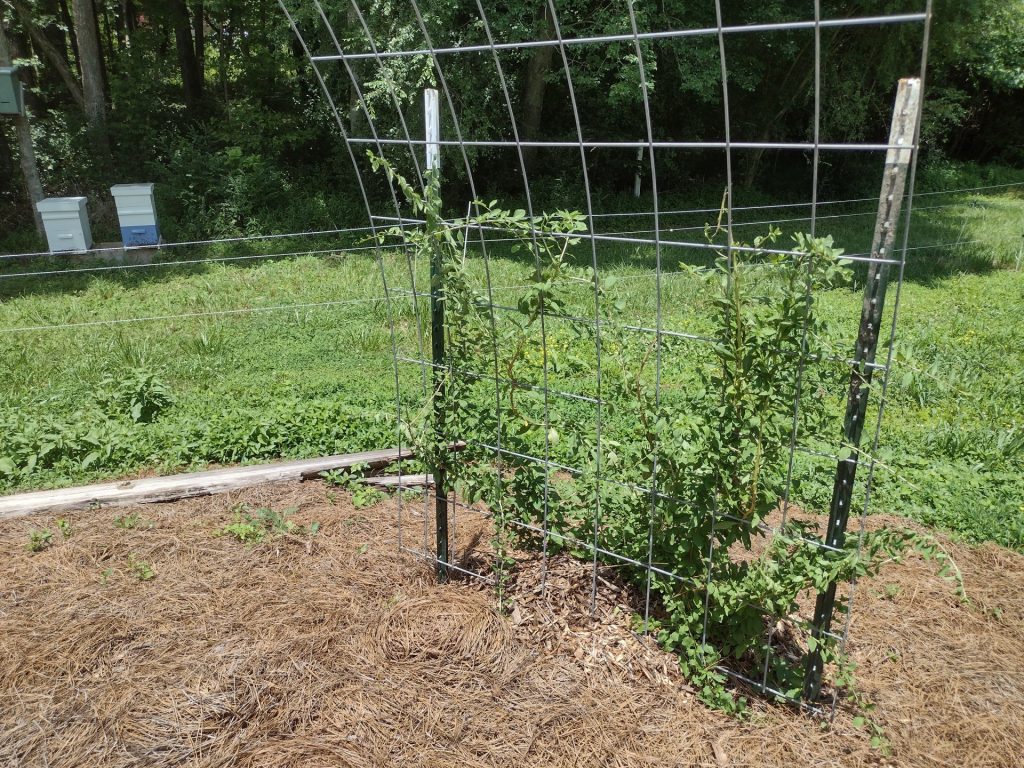
Field #2 Plan
We have an area of field #2 that stays fairly dry, which is ironic compared to how wet the rest of field #2 generally is. This is most likely caused by the depth of the water in that one area. We plan to add goji berries to the dry area. The goji berries have in the food forest in the hugelkultur mound and we hope to continue the success in field #2.
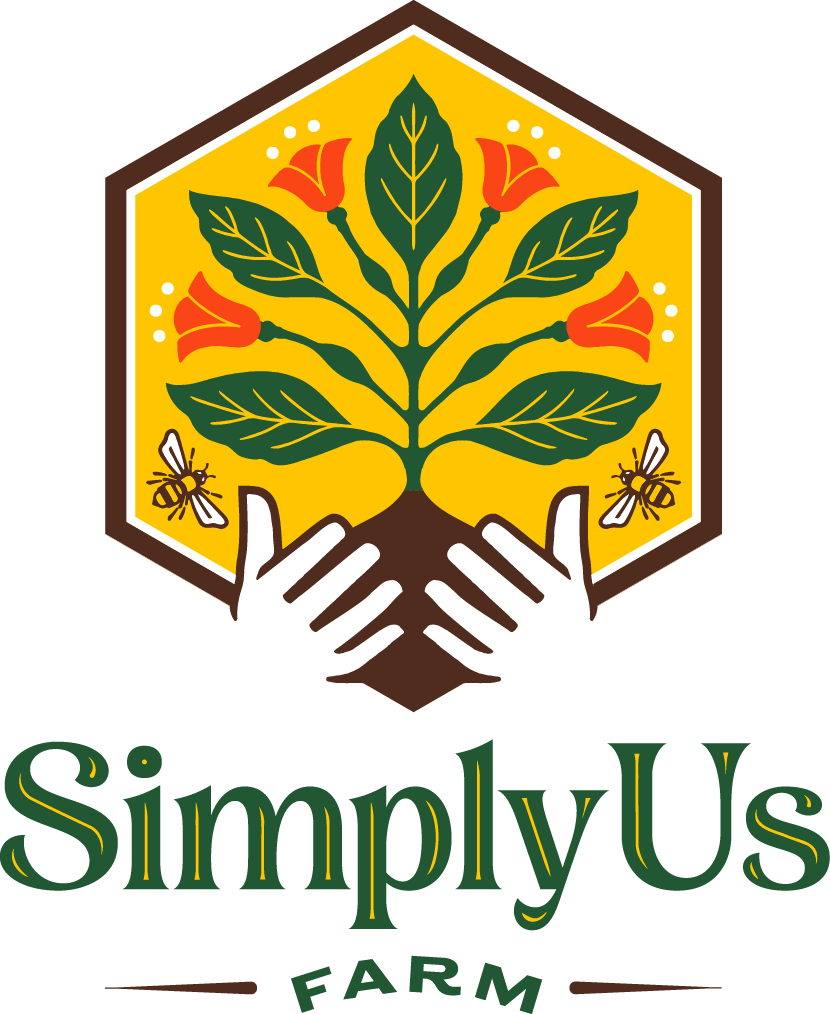
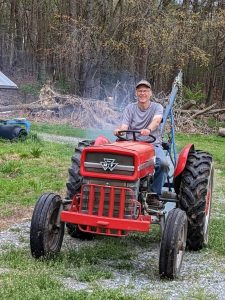 I’m a mechanical engineer turned weekend farmer, so I’m just smart enough to know that there is a lot that I don’t know especially when it comes to farming, permaculture and food forests. I’ve been heavily influenced in my love of farming and permaculture by my Mom and Dad and also by people like
I’m a mechanical engineer turned weekend farmer, so I’m just smart enough to know that there is a lot that I don’t know especially when it comes to farming, permaculture and food forests. I’ve been heavily influenced in my love of farming and permaculture by my Mom and Dad and also by people like 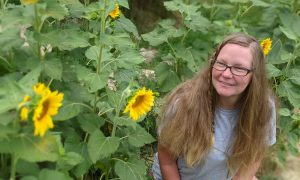 Connie has her certificate in Sustainable Agriculture from CCCC. She really enjoyed the classes at the community college and learned a lot. The program was a mixture of classes and work on the school farm. What she learned has really added to our technical proficiency on the farm.
Connie has her certificate in Sustainable Agriculture from CCCC. She really enjoyed the classes at the community college and learned a lot. The program was a mixture of classes and work on the school farm. What she learned has really added to our technical proficiency on the farm.